Subscribe to our ▶️ YouTube channel 🔴 for the latest videos, updates, and tips.
Representation of Numbers on the Abacus
We will learn representation of numbers on the abacus.
Numbers on Abacus:
|
This abacus is having two spikes. Spike on the left is Tens spike and spike on the right is Ones spike. |
The number of beads placed in Ones spike reads Ones number and the number of beads in Tens spike reads Tens number.
|
Showing 1 at Ones place and 0 at Tens place. So, the number is 0 Tens and 1 Ones - 1 Therefore, it is showing the number 1. |
|
Showing 0 at Ones place and 1 at Terns place. So, the number is One Tens and 0 Ones - 10 Therefore, it is showing the number 10. |
We can show 100 on an abacus with three vertical rods. The rods represent place value of hundreds, tens and ones. We add beads on the rods to show different number. Each rod can hold up to 9 beads.
|
This shows 9 ones |
If we add 1 more to 9 it is 10 ones. Regroup 10 ones as 1 ten. |
This shows 9 tens and 9 ones. The number is 99. |
If we add 1 more to 99 it is 10 tens. Regroup 10 tens as 1 hundred. |
1 bead in the hundreds place represents 1 hundred.
To read a 3-digit number first read the hundreds place and then the last two digits place.
Let us take this example:
|
5 beads in the hundreds place means 5 hundreds. 4 beads in the tens place means 4 tens. 2 beads in the ones place means 2 ones.
The number can be written as 542 = 5 hundreds 4 tens and 2 ones Five hundred forty-two |
Questions and Answers on Representation of Numbers on the Abacus:
1. Read the following numbers on the abacus and write the number names in the given space.
Answer:
1. (i) One hundred twenty-seven.
(ii) Two hundred seven.
(iii) Three hundred twenty-nine.
2. Read the given number on the abacus and fill in the blanks. One has been done for you.
Answer:
2. (ii) 3 hundreds; 8 tens; 6 ones
(iii) 4 hundreds; 5 tens; 0 ones
(iv) 6 hundreds; 5 tens; 5 ones
(v) 1 hundreds; 9 tens; 0 ones
(vi) 7 hundreds; 2 tens; 8 ones
3. Draw beads to show the following numbers on the abacus.
Answer:
3.
4. Read the numbers shown on the abacus. Write the number and the number name in the given space.
Answer:
4. (i) 111; One hundred one
(ii) 388; Three hundred eighty-eight.
(iii) 406; Four hundred six
(iv) 808; Eight hundred eight
(v) 776; Seven hundred seventy-six
(vi) 642; Six hundred forty-two
From Representation of Numbers on the Abacus to HOME PAGE
Didn't find what you were looking for? Or want to know more information about Math Only Math. Use this Google Search to find what you need.
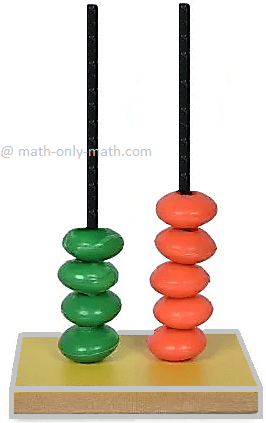
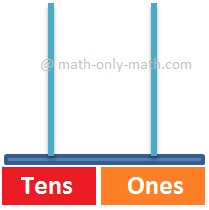
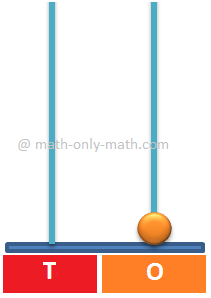
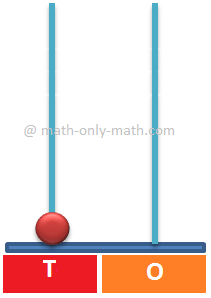
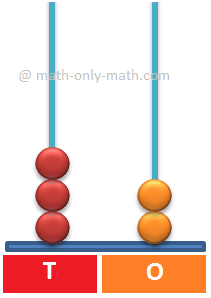
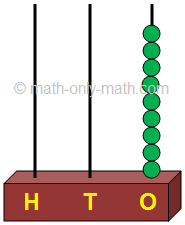
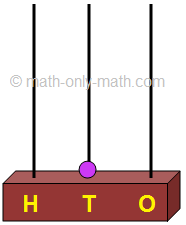
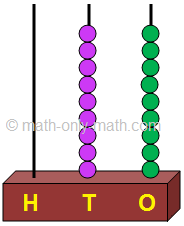
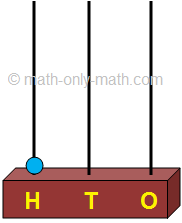
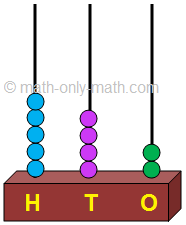
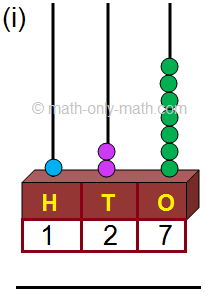
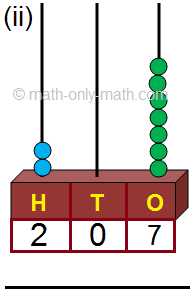
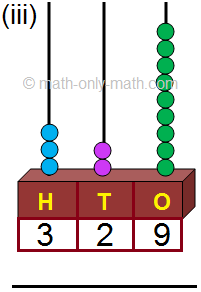
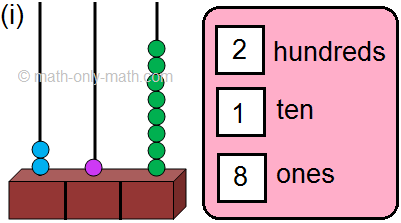
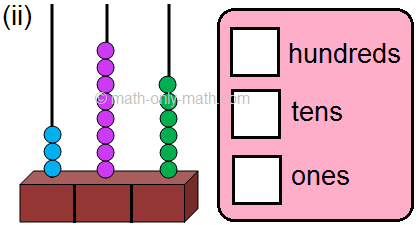
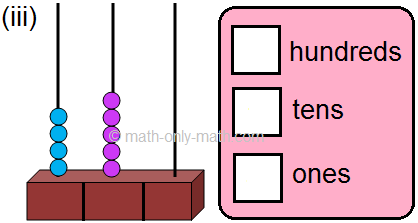
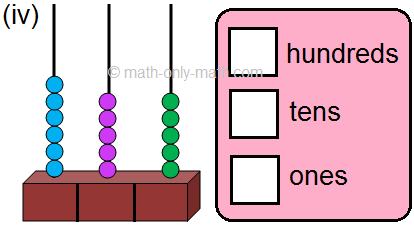
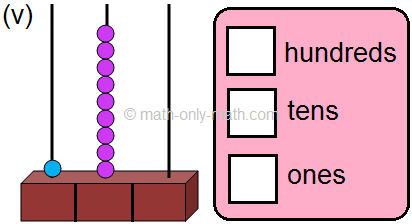
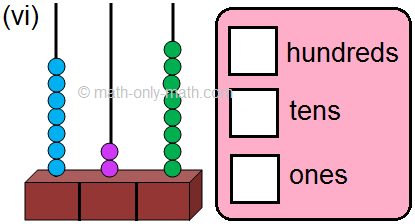
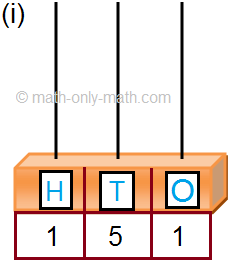
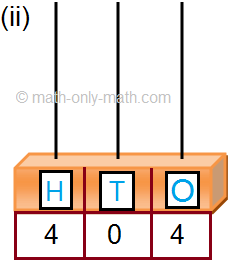
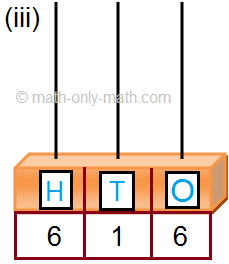
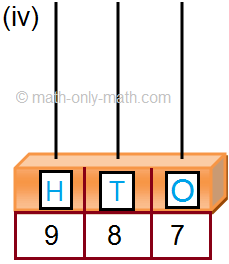
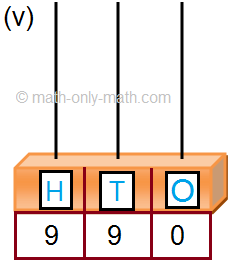
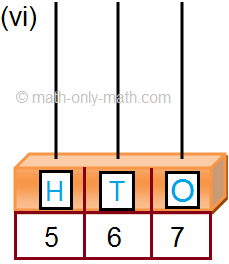
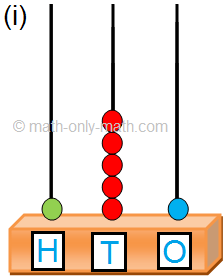
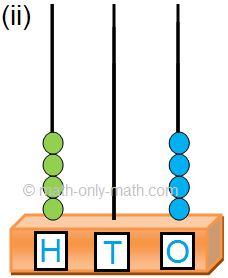
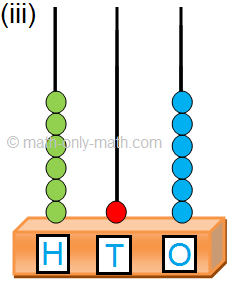
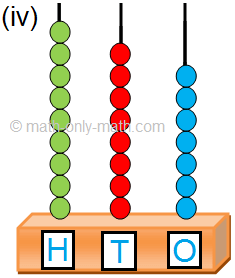
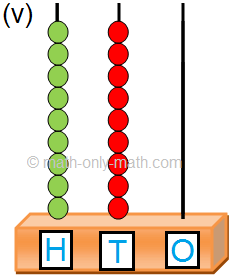
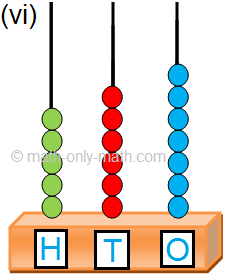
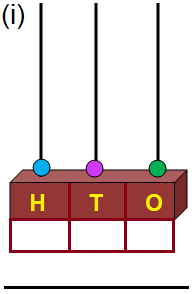
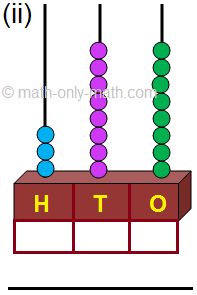
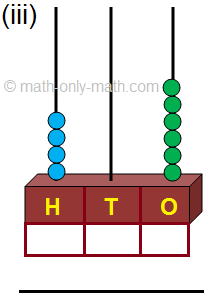
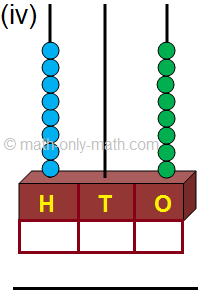
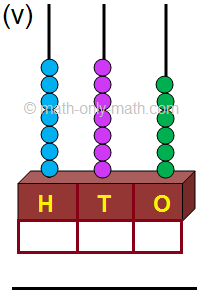
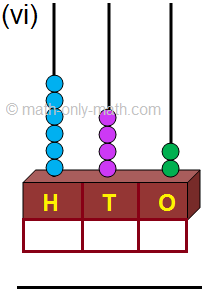


New! Comments
Have your say about what you just read! Leave me a comment in the box below. Ask a Question or Answer a Question.